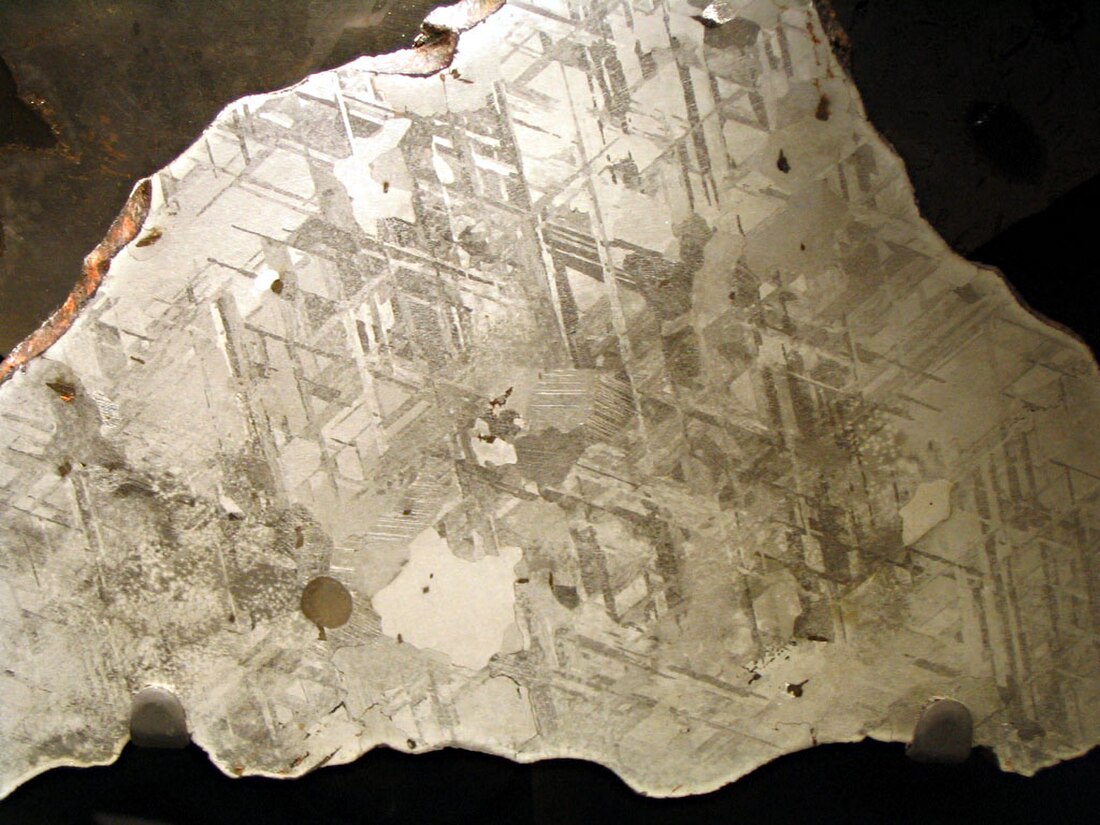Taenite
Alloy of iron and nickel found in meteorites From Wikipedia, the free encyclopedia
Taenite is a mineral found naturally on Earth mostly in iron meteorites. It is an alloy of iron and nickel, with a chemical formula of Fe,Ni and nickel proportions of 20% up to 65%.
| Taenite | |
|---|---|
 Widmanstätten patterns of kamacite and taenite, from a meteorite currently in the Natural History Museum, London. | |
| General | |
| Category | Metals and intermetallic alloys |
| Formula | γ-(Ni,Fe) |
| IMA symbol | Tae[1] |
| Strunz classification | 1.AE.10 |
| Crystal system | Isometric |
| Crystal class | Hexoctahedral (m3m) H-M symbol: (4/m 3 2/m) |
| Space group | Fm3m |
| Identification | |
| Color | metallic grayish to white |
| Cleavage | None |
| Fracture | Hackly fracture |
| Tenacity | Malleable, flexible |
| Mohs scale hardness | 5–5.5 |
| Luster | metallic |
| Streak | light gray |
| Diaphaneity | Opaque |
| Specific gravity | 7.8–8.22 |
| Other characteristics | magnetic, not radioactive |
| References | [2][3] |

The name is derived from the Greek ταινία for "band, ribbon". Taenite is a major constituent of iron meteorites. In octahedrites it is found in bands interleaving with kamacite forming Widmanstätten patterns, whereas in ataxites it is the dominant constituent. In octahedrites a fine intermixture with kamacite can occur, which is called plessite.
Taenite is one of four known Fe-Ni meteorite minerals: The others are kamacite, tetrataenite, and antitaenite.
Properties
It is opaque with a metallic grayish to white color. The structure is isometric-hexoctahedral (cubic). Its density is around 8 g/cm3 and hardness is 5 to 5.5 on the Mohs scale. Taenite is magnetic, in contrast to antitaenite. The structure is isometric-hexoctahedral (cubic). The crystal lattice has the c≈a=3.582±0.002 Å.[4] The Strunz classification is I/A.08-20, while the Dana classification is 1.1.11.2.
Meteorite localities with taenite
See also
References
Wikiwand - on
Seamless Wikipedia browsing. On steroids.
